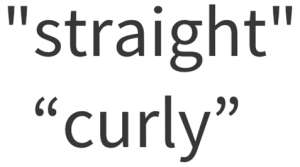JULY NEWSLETTER: Creating content for an AI world
Creating content for an AI world
Traditional content is less successful in a world increasingly dominated by artificial intelligence (AI).
Your potential customers are relying less on traditional search engines. “Because content discovery mechanisms that marketers have relied on for decades are being fundamentally disrupted. Users are bypassing the entire traditional search ecosystem and instead asking AI for answers directly,” according to “The Future of Content(ly)” on Contently’s The Content Strategist blog.
To combat this, Google Search Central suggests that you “Focus on making unique, non-commodity content that visitors from Search and your own readers will find helpful and satisfying. Then you’re on the right path for success with our AI search experiences, where users are asking longer and more specific questions — as well as follow-up questions to dig even deeper.” It also suggests that you assess your content using Google’s criteria in “Creating helpful, reliable, people-first content.”
Streamline your content for greater impact!
Writing that’s less wordy is more powerful.
I have some suggestions on how to cut your word count. One tip is to substitute simple words for phrases. For example, “building my knowledge” becomes “learning.” “In advance of” becomes “before.”
Learn more in “8 ways to cut word count and boost your impact!”
Neurosurgery in 19th-century Japan
Having lived in Japan and earned a Ph.D. in Japanese history, I enjoy watching Japanese-language shows on Netflix.
Here are some subtitled shows that I like:
- Jin—A modern-day neurosurgeon time-travels to the period just before the 1868 Meiji Restoration. He meets some real-life historical characters, such as Sakamoto Ryoma.
- The Family—A zaibatsu family’s son and father disagree about the company’s future.
- Dr. Coto’s Clinic—A doctor moves from Tokyo to a clinic on an isolated island.
- Inheritance Detective—A former lawyer helps clients resolve inheritance issues.
Pan-fried chickpea patties
These chickpea patties from the Well Seasoned Studio blog are delicious! I’ve been trying a lot of dried bean recipes as I get rid of old pantry staples.
What my clients say about me
 “Fast, effective, insightful. I can think of no better resource for superior financial writing.”
“Fast, effective, insightful. I can think of no better resource for superior financial writing.”
“Susan has an exceptional ability to tailor investment communications to the sophistication level of any audience. She has an uncanny ability to make very complex investment and/or economic topics accessible and understandable to anyone.”
“Susan’s particularly good at working through highly technical material very quickly. That’s very important in this business. A lot of people are good writers, but they have an extensive learning curve for something they’re unfamiliar with. Susan was able to jump very quickly into technical material.”
Improve your investment commentary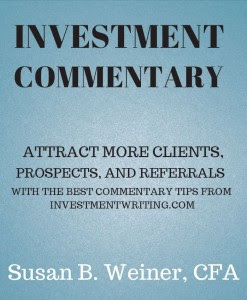
Attract more clients, prospects, and referral sources by improving your investment commentary with 44 pages of the best tips from the InvestmentWriting.com blog.
Tips include how to organize your thoughts, edit for the “big picture,” edit line by line, and get more mileage out of your commentary.
Available in PDF format for only $9.99. Email me to buy it now!
Boost your blogging now!
Financial Blogging: How to Write Powerful Posts That Attract Clients is available for purchase as a PDF ($39) or a paperback ($49, affiliate link).
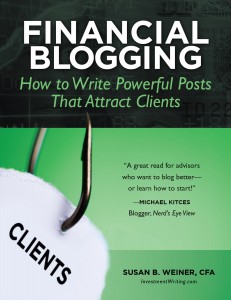




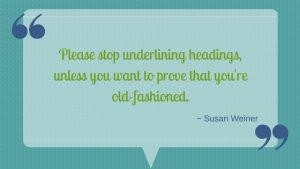

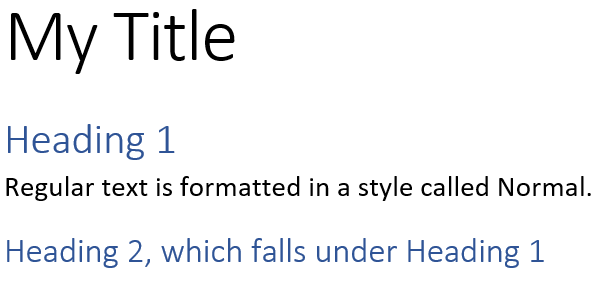
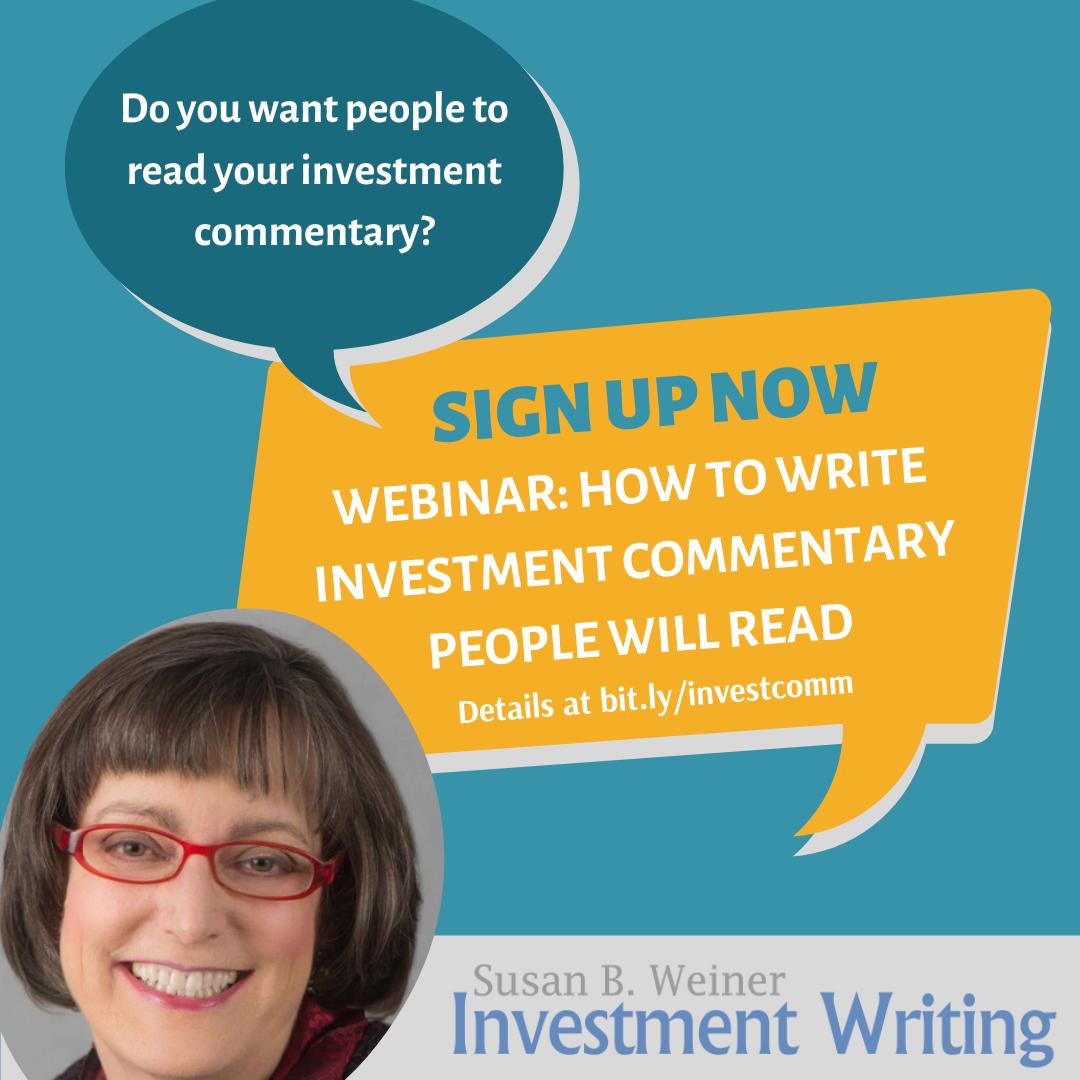
 It can be distracting if writing styles are inconsistent within and across documents published by your firm. For example, is it “counterparty” in the first paragraph and “counter party” in paragraphs two and three? Do headings randomly mix sentence case and title case? Is your company name abbreviated in different ways?
It can be distracting if writing styles are inconsistent within and across documents published by your firm. For example, is it “counterparty” in the first paragraph and “counter party” in paragraphs two and three? Do headings randomly mix sentence case and title case? Is your company name abbreviated in different ways?

